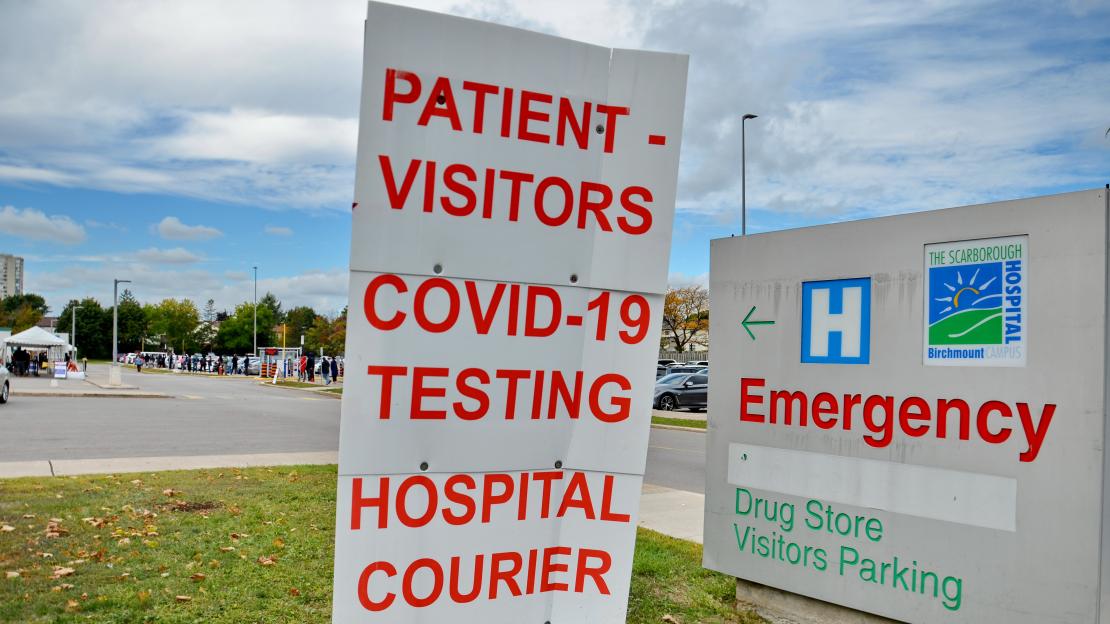Building a better, more inclusive health care system in Scarborough requires more than hiring doctors and nurses — it means addressing the non-medical factors that make people sick.
These factors, known as the social determinants of health, include income, housing, access to food, working conditions, physical environment as well as race and racism. Community advocates and researchers highlighted these as key components of community health and wellbeing during a day-long event aimed at bridging the health equity gap in Scarborough.
The disproportionate burden racialized communities in Scarborough experienced during COVID-19 can be explained by the social determinants of health, says Michele James, vice-president of people and transformation at the Scarborough Health Network.
“Scarborough has some distinctive socio-demographics,” she says, indicating that almost 60 per cent of residents are born outside Canada, 50 per cent speak a primary language other than English, 73 per cent are racialized, and 25 per cent of children live in low-income families.
“No matter what indicator you pick to measure the burden of COVID, race makes a difference,” James says. “Whether you're looking at COVID cases, hospitalizations, ICU admissions or fatalities, you'll see higher rates among racialized groups.”
She highlighted research by U of T’s John Stapleton, which found places hit hardest by COVID also had more households where multiple working adults and families lived together. One of these areas was Scarborough.
Participants agreed collecting race-based data was important to address the underlying social determinants of health, but emphasized that health networks, researchers and community groups must also build trust in racialized communities.
No matter what indicator you pick to measure the burden of COVID, race makes a difference.
Mobility and accessibility, and barriers to each in the eastern GTA, also impact community health and wellbeing.
There are significant consequences to inaccessibility; Scarborough residents engage in fewer activities that require leaving the house than people elsewhere in Toronto, according to research from Steven Farber, associate professor in the department of human geography.
Investment in transportation has remained scant while Scarborough continues to experience higher levels of poverty. Residents may be less likely to access services for improving mental and physical health when limited transportation is available.
The meeting’s participants stressed the need for community collaboration in transportation decisions, particularly among newcomers to Canada and those with disabilities. These voices are key in identifying community needs, how transportation projects impact different groups and worsening inequalities.
Any conversation about health needs to consider access to nutritious food, said Suman Roy, executive chef and food security advocate who oversees five food banks in Scarborough. The pandemic exacerbated food insecurity, and many food banks were stretched to the limit.
While food banks provide an essential service for families, Roy said it’s only a Band-Aid solution and that working families in Scarborough need reliable access to nutritious and culturally appropriate foods.
Achieving this could include a progressive, well-funded community garden policy, vouchers for local farmer’s markets and connecting more local food growers to communities throughout Scarborough.
“For some reason, growing food is not seen as a cure to food insecurity,” said Roy, adding he rarely has trouble securing funding for a food bank, but can’t get any funding for a community garden project.
Addressing food security is also tied to wider socioeconomic issues, said Jayeeta Sharma, associate professor in the department of historical and cultural studies at U of T Scarborough.
“Canada is a wealthy country, there’s no reason why access to food should be an issue,” she said.
If a family is struggling to pay for housing and transit while working precarious jobs, they might be forced to rely on heavily processed foods instead of fresh produce. This has downstream negative consequences on their physical and mental health, she said, and the problem extends to the entire community.
Two facilitated discussions were also held throughout the day. The first, Defining Urgent Needs for More Equitable Access to Healthcare in the Eastern GTA, was led by Notisha Massaquoi, assistant professor in the department of health and society at U of T Scarborough. The second, Building our Capacity to Co-develop Equitable Services and Policies and Promote Health for All, looked at how individuals, families, communities, and partners can co-develop health strategies that emphasize collective action.
Health inequities are avoidable, said Kwame McKenzie, CEO of The Wellesley Institute and professor in U of T’s department of psychiatry. “Health inequities are the things we can change; they are the differences that shouldn't occur,” he said, adding that the solution is to build a health system that is accountable for equity.
Community health organizations in the eastern GTA have been tackling health inequities for years, with substantial progress. But more work remains. There was agreement among participants that in order to bridge the health equity gap — to advance knowledge and take action against the social determinants of health — joining forces to create a health district in Scarborough would be an important step.
